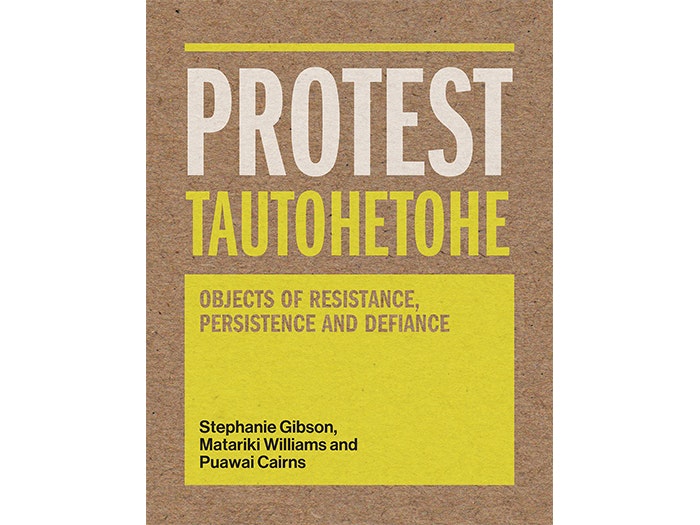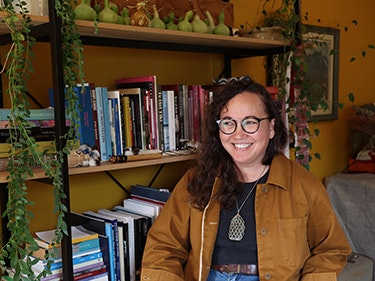
Protest Tautohetohe: Objects of Resistance, Persistence and Defiance
An illustrated history of protest and activism in Aotearoa New Zealand.
Free museum entry for New Zealanders and people living in New Zealand
Open every day 10am-6pm
(except Christmas Day)
Free museum entry for New Zealanders and people living in New Zealand
Stephanie Gibson, Matariki Williams and Puawai Cairns discuss Protest Tautohetohe with Te Papa Press
Stephanie Gibson is Curator Contemporary Life & Culture at the Museum of New Zealand Te Papa Tongarewa. She is researching the material and visual culture of protest, conflict and reform, as well as everyday life in Aotearoa New Zealand. Her continuing museological research focuses on museums and community participation.
Matariki WIlliams (Tūhoe, Te Atiawa, Ngāti Whakaue, Ngāti Hauiti) is Curator Mātauranga Māori at the Museum of New Zealand Te Papa Tongarewa. She has a broad interest in the intersections within te ao Māori and how this contributes to a diverse contemporary Māori society.
Puawai Cairns (Ngāti Pūkenga, Ngāti Ranginui, Ngāiterangi) is the Head of Matauranga Māori at Te Papa. She specialises in contemporary social history research and collecting to reflect the stories of Māori communities.
PC: Yes. The book is a reference bank for all the myriad ways that people of Aotearoa have demonstrated protest. We described the book as containing objects of resistance, persistence and defiance, and set about trying to find objects that you might not even possibly first consider as protest objects.
SG: We started by delving into Te Papa’s collections and talking to our curatorial colleagues – we have rich holdings of objects and images. Then we travelled around the country, researching collections and meeting face to face with curators, archivists and activists. The most compelling objects and stories surfaced and made themselves apparent.
SG: We were completely open to what might be a protest object – basically anything that was evidence of protest and was compelling in itself. It’s easy to spot the obvious objects of course – banners, placards, posters, t-shirts, badges – the book is full of them! But I’m particularly pleased with objects like the anti-nuclear undies which I hope will surprise people.
PC: I really love that we can show objects of protest across generations. The Pai Mārire crosstree from the 1860s, the work of Ngaahina Hohaia, the plough from Puke Ariki’s collection used in the 1870s as unarmed protest, and the small poi made by a group of women for the International Women’s Day protest in 2017 who were taught by Maata Wharehoka, are all objects that show passive resistance movements emanating from the Taranaki region across time and space, and which reflect the ongoing power of protest.
MW: Many of the major Māori protest movements featured happened either before I was born or when I was a child. The arts, music and taonga taught me about those times when I became more socially and politically aware. The taonga to which I am most connected is the Pouwhenua carved by Moka Puru, as it speaks of a universal Māori experience of land alienation. My whānau also has a connection to Moka Puru through my great-grandfather Kupai McGarvey, who was gifted a tokotoko carved by Moka during the hīkoi, a taonga that holds a very important place in my whānau.
PC: One of my favourite experiences was meeting Tuaiwa (Eva) Rickard’s family where we were allowed to see and handle Whaea Eva’s dresses that she wore throughout her life. These dresses are still in the ownership of her family and are bold, colourful and real, just like Eva. Handling them makes you also realise how slender and tall she was. Those dresses are taonga because they were made by Eva and were her emblems as she protested.
SG: It is impossible to collect every protest – activism plays out daily in a huge range of causes. We keep a watching brief on nationally significant protests, both past and present, particularly those movements that have a zeitgeist quality (for example, the Women’s March in 2017). We take a gentle approach with activists and makers – we prefer to establish good relationships first – which might result in offers of donation or sale. We sometimes let people know that we can be a good home for their taonga. And we also work with other institutions in New Zealand that might be more appropriate repositories.
MW: Texts maintain an enduring presence of activist actions, they help to capture for later generations just what it was like to be at the frontline of some of these major causes. Including the text is also important for acknowledging that activism takes place in multiple spaces: archives, history books, literature. The range chosen also reflects the softer side of activism, with Hone Tuwhare’s ‘Papatūānuku’ showing that Māori were marching for something, and in doing so were massaging the land with ever-loving feet.
MW: Protest is often painted as nihilistic dissent but there is a lot of unity in protest. People supporting one another and fighting together, many activists showing solidarity by attending one another’s occupations. Even now, with movements like Ihumātao, people are showing solidarity by showing up, including some of the protesters of the past like Joe Hawke and Tame Iti.
MW: That activism takes many shapes and forms, and that resistance can occur on the streets and it can be worn on the lapel. That people live some kind of resistance every day and it is through objects that they can be inspired to take courage and do so.
SG: That protest is a normal activity in a democracy, and we can all be activists, no matter how small the act. The objects people make and use to help them protest are important evidence and maintain their power, long after their time of action.
PC: This book is like an archaeological dig into social protest and activism. We have managed to include big objects with fully realised narratives as well as humble objects with only fragmentary stories. But each of them is important because protest is important, no matter how large or small the act. We will continue to collect these stories as long as protest exists.

An illustrated history of protest and activism in Aotearoa New Zealand.


